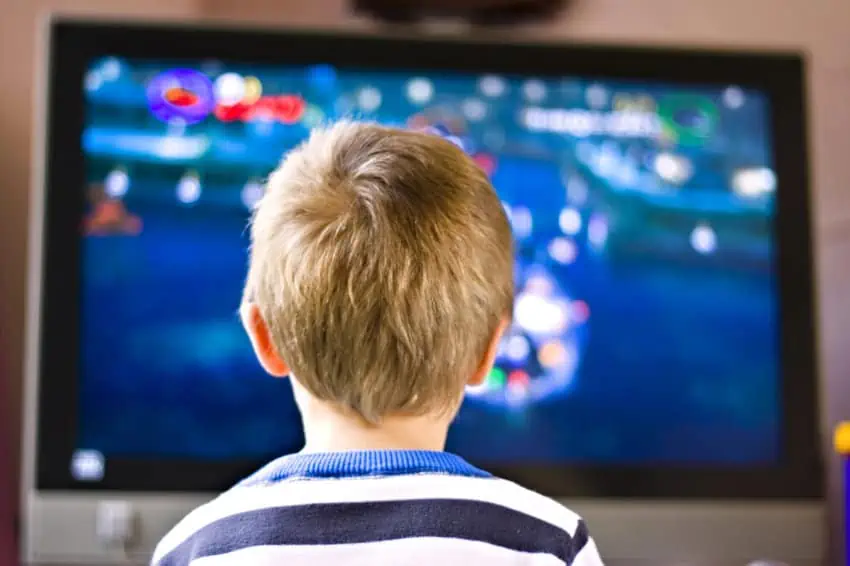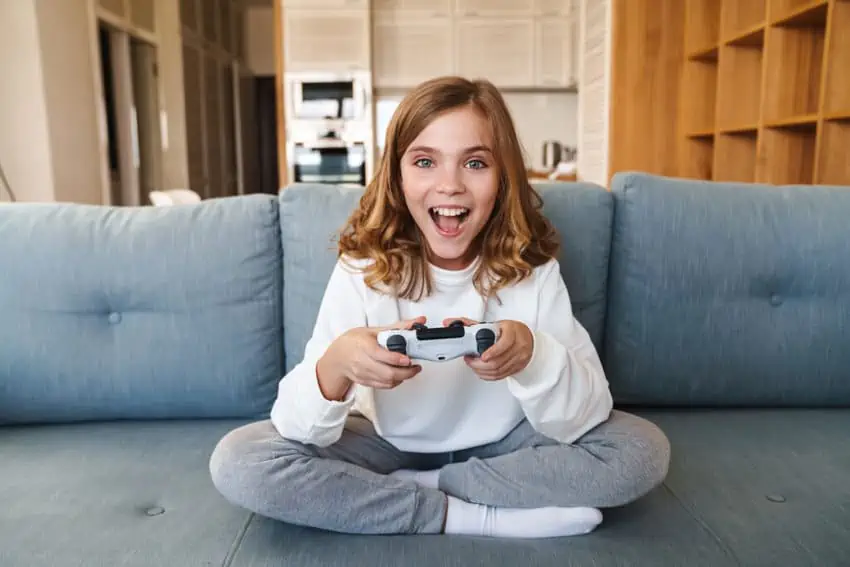Navigating a balance between screen time & healthy alternatives. Trump the digital world with balanced physical, mental and emotional health.
Guarding Young Minds: Navigating Screen Time for Healthier Childhoods & Mental Health
In this digital era, the challenge of parenting now extends to how we navigate our children’s screen and viewing time. My personal experience has led me to understand that teaching kids about screen addiction as well as finding a good balance between some monitored use (of all types of devices including television and computers) versus restricting it all, and finding healthy alternatives is crucial.
It isn’t just about limiting their time in front of screens but constructing a positive digital environment that promotes their well-being now, and far into the future. From cognitive development to social skills, the impact of screen time is vast and can have consequences, but can also be utilized constructively.
It’s the world kids are now growing up in, so knowing how to use technology is important, but how to stay safe as well as emotionally and mentally healthy, is just as crucial.
As parents, our role in managing this aspect of their lives has never been more important. With the advancements in technology, use of AI creation of images and media, identity theft and online bully, allowing free access to all that’s offered isn’t really the best choice. With physical, mental and emotional risks including obesity, sleep disturbances, and emotional turmoil, striking the right balance is necessary for a healthy childhood and foundation for their wellbeing into the future.
Addictive habits now are also steppingstones into great problems in the future, and awareness starts now.
Related: Smart Screentime Rules: Guiding Kids & Teens in the Digital Age
Key Takeaways in this Article:
- Understanding Risks: Identifying the multifaceted risks screen time poses to child development, including cognitive, emotional, and physical health.
- Parental Role: Emphasizing the pivotal role parents play in setting limits, encouraging healthy activities, and leading by example.
- Balance and Alternatives: Highlighting the importance of balancing digital and real-world interactions to foster social skills and overall well-being.
Understanding Screen Time
Screen time has woven itself into every facet of modern childhood and is present in most schools, classrooms, sports even, and home life.
It encompasses any moment spent in front of digital screens, be it smartphones, tablets, computers, or televisions. I see two primary forms of screen interaction—educational and recreational. This isn’t to say this just impacts kids, because I see myself through having these conversations and have to be aware of how this affects me as well (so I model best practices for my three kids.)
Common Sense Media published results from 2015 and 2021 surveys on children’s cellphones and social media use. It showed in 2015, 41% of 12-year-olds had a phone and in 2021, 71% of 12-year-olds do.
Educational screen time aims at enriching a child’s learning experience through apps and online platforms that stimulate cognitive development, language skills, and even emotional understanding. This could be helpful tools found in schools, or downloadable to enrich learning at home.
Meanwhile, recreational screen time often is for pure entertainment and involves activities like gaming or video streaming, youtube videos and social media apps.
Both forms can offer benefits, yet the balance between them often tips unfavorably towards excessive recreational use. This imbalance has sparked concerns about screen addiction, obesity, sleep disturbances, and the impact on digital wellbeing, underlining the importance of parental control and the promotion of healthy activities.
It’s important to note that with recreational screen time, this is typically where you’ll find more bullying, inappropriate content, divisive interactions and harmful material for immature viewers.
The Ripple Effects of Screen Addiction
Excessive screen time has woven a complex web of effects on child development. This article titled, “Psychologist: No phones until high school and no social media until 16” highlights the detrimental effects of their usage.
Screen time addiction dulls cognitive faculties, leading to diminished executive functioning and faltering academic performance. This trend alarms many. Children, immersed in digital realms, often forgo the richness of real-world experiences and are less inclined to participate in activities, be outdoors in nature and nurture in-person relationships.
As miss out on healthy physical activities, emotional turmoil can follow suit. Rates of depression, anxiety, and social disengagement soar among the young and have skyrocketed since the pandemic.
Obesity and sleep disturbances are not far behind, complicating the issue further. Each facet of development, cognitive, language, social skills, and emotional balance, faces threats. Recognizing these risks is the first step towards fostering healthier habits for our children.
Cognitive Development at Risk
Excessive screen time has emerged as a threat to the cognitive development of children. It disrupts their ability to focus, process information efficiently, and hampers executive functioning. Studies have shown that children immersed in screens for prolonged periods often displayed reduced academic performance but increase in behaviors such as concentration and inability to focus for stretches of time, management of self and their body, restlessness and lack of creativity.
They struggled with tasks requiring deep concentration and critical thinking. The allure of digital devices, offering instant gratification and sometimes a break for teachers and even Mom and Dad after a long day at work, has undermined traditional learning processes.
A child’s capacity for self-regulation, memory retention, and the capability to transition between tasks gets compromised. By understanding these risks, parents can steer their children towards activities that bolster cognitive growth, setting a foundation for sound emotional and social development in the digital age.
The Language Barrier: Screen Time’s Impact
Screen time dramatically reduces the quality interactivity between children and adults, and also among peer-to-peers. Community and connection are sorely lacking from children’s childhoods compared to their parents and generations that came before.
This reduction in interactive experiences impacts language development significantly. Conversations, rich in vocabulary and expression, become scarce as screens captivate young minds. Children immersed in digital worlds often miss the nuanced, real-world linguistic cues essential for language acquisition, as well as learning how to read and identify body language where cues are also taken from.
As a result, the ancient art of storytelling, once passed from generation to generation, finds itself competing with digital narratives. This shift promotes a passive vocabulary, limiting a child’s ability to articulate thoughts and feelings.
To nurture cognitive development, fostering face-to-face conversations is crucial. These interactions provide not only the scaffold for language learning but also strengthen social skills, laying a foundation for healthy emotional development.
The Emotional Quagmire of Excessive Screen Time
Heavy screen use has shown to weave a complex web around emotional wellness in children and the time to get ahead of this is now, before it gets worse.
Studies have pointed towards a disturbing correlation with heightened instances of anxiety and depression. Beyond these emotional ailments, aggression has emerged as a side effect, distancing young individuals from their inherent capacity for empathy.
A significant contributor to this turmoil is the decline of face-to-face interactions. The digital realm often substitutes genuine human connections with superficial engagements, even if kids are gaming “together” through a screen, it still leaves youths ill-equipped to navigate the nuances of real-world relationships.
This shift has profound implications for children’s understanding of friendships and their ability to communicate effectively. As screens become filters through which the world is lived, the value of direct human interaction diminishes. By recognizing these patterns, we can initiate steps towards restoring a sense of balance, encouraging activities that foster genuine connections and healthy emotional development.
Physical Consequences: Obesity and Sleep Disorders
Screen time, once considered a harmless distraction, has morphed into a catalyst for obesity and sleep disturbances among children.
These two physical consequences underscore a disturbing trend in the digital age. Looking at blue light, especially before bed, disrupts the circadian rhythm (your sleep cycle which is naturally regulated by sunlight in the morning and at dusk), but can also be a contributor to illness and disease.
A child glued to the screen for hours will likely battle weight issues. This child, submerged in digital content, struggles to disconnect at bedtime, leading to worsened sleep quality which has downstream consequences.
Parents, wielding the power of behavioral control, stand as guardians against this tide. Their role is pivotal in drawing boundaries that safeguard their children’s wellbeing. By encouraging a balance, replacing screen time with healthy activities, parents can steer their young away from these physical pitfalls. Thus, the journey to digital wellbeing begins at home, with every screen limit set and alternative activity offered and you have the power to make changes now.
Age-wise Impact and Recommendations
Screen time impacts children differently based on their age, and it’s crucial for us as parents to understand these nuances. For infants, the focus should be on avoiding screen addiction right from the start.
Birth to 2 Years: Experts suggest keeping screens away and promoting physical interaction enhances cognitive and emotional development.
Ages 3 to 5: Balance comes into play, with a limited yet structured blend of educational content and interactive play recommended. This fosters both language development and healthy social skills.
Ages 6 to 12: Diverse activities become key. Here, balancing educational screen time with outdoor activities helps prevent obesity and sleep disturbances.
Teenagers: The challenge escalates. It’s about promoting digital wellbeing alongside fostering independence. Encouraging them to pursue hobbies beyond the screen cultivates a balanced approach to life.
Parental Playbook: Guiding Screen Usage
Here are some suggestions, based on ages, how to take charge with screen time and device use.
Birth to 2 Years
Limited exposure to screens proved crucial for infants’ development. In fact, zero exposure would be best.
Studies have shown that interactive play and physical bonding fostered not only emotional closeness but also cognitive and language growth. Infants thrived on the tactile, face-to-face interactions that screens simply could not replicate. Be outside, touch, feel, listen and see all the world has to offer away from all devices.
By focusing on the real-world experiences, we ensured that our three kids embarked on a journey of discovery that was both healthy and holistic. As they navigated each crucial developmental stage, the foundation for strong cognitive, emotional, and social skills was laid down. Thus, dedicating time to hands-on activities evolved into a pivotal aspect of nurturing a well-rounded individual. Children need simple and it’s the power of simple, that’s the most profound for them.
Ages 3 to 5
At this vibrant age, children teemed with energy need a balance that fosters both learning and physical activity. We have observed how minimal educational screen time, when moderated, can boost cognitive development and prime young minds for academic success in the future.
However, introducing them to a mix of screen-based educational tools for brief periods of time ( 10 – 20 minutes a day) and engaging physical activities remains imperative.
Activities such as storytelling, interactive games, puzzles, playing outside, building, sensory experiences and creative endeavors enhance language development and social skills.
The research I found indicated that limiting screen time to no more than 30 minutes a day for this age group, significantly aids in mitigating risks such as screen addiction, emotional development issues, and sleep disturbances. No screens 2 hours before bedtime is also best!
Then, encouraging playtime outdoors or arts and crafts can develop their fine motor skills and creativity, effectively balancing their digital and real-world experiences.
Ages 6 to 12
For children aged 6 to 12, achieving a healthy balance between screen time and other activities becomes increasingly crucial, especially when these devices may be implemented at school and managing at home becomes increasingly important.
They have grown more independent, exploring the digital world alongside traditional forms of learning. It is essential for us to introduce them to a variety of pursuits. Outdoor play not only fosters physical health but also promotes social skills and emotional development. During this phase, the allure of screens can be strong because a peer aspect comes into play.
Yet, within this age group, educational screen time holds value. The right kind of digital content can complement their learning, enhancing cognitive development and academic performance.
However, we must tread carefully to avoid screen addiction. Encouraging participation in physical activities, arts, and social interactions away from screens will ensure a well-rounded development. Screen balance thus becomes a critical strategy, helping us navigate the challenges of fostering digital wellbeing without sacrificing the enriching experiences of real-world exploration.
Teenagers
This delicate balance challenges us to navigate the treacherous waters of digital wellbeing and emotional development. We must guide them in avoiding screen addiction that might lead to depression, anxiety, other mental health and emotional expression that’s challenging and a loss of sleep.
Encouraging healthy activities plays a crucial role in this endeavor and finding a balance is crucial. By establishing rules around screen balance (or even implementing timers and shut-down tools on phones, televisions, computers, etc when a time limit is reached), I emphasize not just the reduction of screen time, but also the promotion of enriching experiences that foster cognitive development and bolster social skills.
To achieve this, teenagers need parental control that feels less like surveillance and more like guidance. It’s a delicate balance at this stage of their life. I propose weaving in conversations about digital content’s impacts, guiding them in recognizing the signs of screen addiction and helping them identify their feelings and emotions when they use devices and exhibit negative behavior afterwards.
Proactively suggesting real-time interactions to build social skills can counterbalance online engagements. Remember, the goal isn’t to eliminate screen time, but to champion a future where screen management leads to a healthier, more balanced lifestyle for our teenagers.
Finding the Right Balance for Healthy Screen Habits
Setting Boundaries and Screen Time Limits
Creating a structured digital environment for our children involves setting clear limits on screen time. I discovered early on that establishing firm boundaries promoted healthier screen habits, something crucial for preventing screen addiction. It became apparent that consistency in enforcing these limits was pivotal and is usually the hardest part, as a parent. (Myself included!)
Effective strategies included designating specific hours of the day as screen-free times, such as during meals and before bedtime, to avoid sleep disturbances. This approach helped in balancing screen time with essential activities like physical play and family interactions like playing cards or going on a family work, critical for cognitive and social skills development.
Moreover, I emphasized the value of parental control tools for managing content and usage times, which proved instrumental in fostering a sense of digital wellbeing. By leading through example, I ensured my child understood the concept of digital balance.
Discussions around the rationale behind these rules reinforced their importance, encouraging self-regulation over time. Ultimately, these measures supported a healthier, more active lifestyle, significantly reducing risks linked to obesity, depression, and anxiety.
Encouraging Healthy Alternatives
In the quest for digital wellbeing, we must steer children towards a variety of alternative activities that foster their holistic development. Screen management isn’t solely about restricting; it involves creatively substituting screen time with pursuits that enrich a child’s life.
Physical play, for instance, significantly lowers the risk of obesity and improves sleep patterns, warding off sleep disturbances that often plague young minds glued to screens. Are kids involved in sports, theatre, the arts, movement of any type?
Communal interactions, too, play a crucial role. They enable children to navigate complex social dynamics, thus preventing the erosion of social skills that can result from excessive screen exposure.
By engaging in structured activities such as team sports or free play, children learn valuable lessons in cooperation and understanding. Introducing hobbies that stimulate the mind, like reading, painting, or playing musical instruments, can combat the risks associated with screen addiction, including depression and anxiety.
Through these balanced engagements, we pave the way for a more flourishing childhood, devoid of digital pitfalls.
Lead by Example: The Parent’s Role
In our digital age, the mantle of setting healthy screen habits firmly rests upon our shoulders as parents. It’s not just about enforcing rules; arguably, our behavior casts the longest shadow over our children’s digital well-being.
They observe us, often imitating our relationship with screens. If we’re glued to our devices during family time, how can we expect them to embrace screen balance?
This underscores the critical need for us to lead by example, demonstrating a harmonious blend between screen time and real-world interactions.
Initiating and maintaining an open dialogue about screen use goes a long way in avoiding screen addiction. Discussions about the content we consume and its impact on our cognitive development, social skills, and emotional development should occur frequently.
This approach not only helps mitigate risks such as obesity, sleep disturbances, depression, and anxiety but also fosters a deeper understanding between you and your child. Remember, the goal isn’t to instill fear but to promote a healthier, more balanced digital lifestyle.
Navigating Social Skills in a Digital Age
Excessive screen time has shifted the way children develop social skills. They may face challenges in understanding non-verbal cues and handling face-to-face interactions.
This shift often leads to a decrease in the ability to empathize with others and effectively communicate with others. Yet, we possess the power to guide our children towards nurturing robust social connections in the real world. It also
Encourage engaging in activities that promote in-person interactions whether it’s team sports, artistic classes, an after-school group and family outings where there will be conversations happening, you want to provide opportunities for children to hone their interpersonal skills.
Remember, balance is key. It’s not about eliminating screen time but rather about harmonizing it with healthy, real-world experiences. By acting as role models, showing empathy, and maintaining an open dialogue, we guide our children towards understanding the value of genuine human connections.
The Balance Act: Screen Time vs. Real Time
Finding equilibrium in a digital age demands we assess not only the quantity but the quality of screen time. We grappled with screen addiction, understanding its potential to skew development in children. This concern has propelled us to seek solutions. Thus, promoting a balanced digital diet has emerged as paramount.
A shift towards fostering real-world interactions becomes crucial. Digital wellbeing hinges on this balance. We have learned that activities devoid of screens can bolster cognitive development and enhance language skills.
They encourage physical activity, crucial for avoiding obesity and mitigating sleep disturbances. Moreover, they foster social skills by providing children authentic scenarios to navigate emotions, avoiding the pitfalls of depression and anxiety.
I constantly advocate for outdoor play because as a Holistic Health and Integrative Health Practitioner, not only is the sun essential for regulating our circadian rhythm and natural production of melatonin as well as producing vitamin D and boosting the immune system, studies show that being in a “green environment” creates more serotonin and “happy” brain chemicals.
I always suggest weaving in activities that promote a healthy lifestyle, thereby ensuring digital balance. Remember, engaging in a variety of experiences enriches a child’s emotional development. It’s not merely about steering clear of screens; it’s about selecting healthier alternatives to cultivate a rounded, thriving individual.
We must embrace our role in guiding this balance, leading by example to inspire a constructive relationship with technology. This, in turn, carves a path towards a more vibrant, less screen-dependent life for our children.
Looking Forward: Embracing a Healthier Digital Future
Our journey through understanding and managing screen time has revealed the profound impact it has on child development, from cognitive growth to social skills and emotional well-being.
We uncovered the challenges of screen addiction, obesity, sleep disturbances, depression, and anxiety – all potential companions of unregulated digital exposure. Now, as we look toward embracing a healthier digital future, it’s clear that maintaining a balanced relationship with technology will serve as the cornerstone of nurturing resilient, well-rounded children.
The responsibility lies with us, the parents, caregivers, and shepherds to guide our young ones through this digital landscape.
Yet, it’s not enough to merely limit screen time; fostering healthy alternatives is equally important. Encouraging activities that promote cognitive, physical, and social development ensures our children gain valuable skills and experiences beyond the digital realm.
One fact has remained constant: our example sets the stage for our children’s habits. Demonstrating healthy screen habits, engaging in open dialogues about media use, and prioritizing real-world interactions over digital ones empower our children to make informed decisions about their screen use. It teaches them the importance of balance – balancing educational and recreational screen time, balancing digital and real-life experiences, and finding that sweet spot where digital wellbeing enhances rather than detracts from overall quality of life.
I urge us all to take proactive steps towards managing screen time effectively. By doing so, we not only mitigate the risk of screen addiction but also open doors to a world where our children can thrive, both online and off.
Emphasizing the significance of a balanced approach, nurturing healthy social interactions, and guiding our young ones through their digital journey, we will indeed foster a healthier, more balanced lifestyle for our children. As we move forward, let’s embrace the digital age with awareness, responsibility, and a steadfast commitment to our children’s holistic development.
Related Articles to Screentime for Children
- How To Break Your Child’s Screen Addiction
- Creating Screentime Rules for Summer (Free Printable)
- The Harmful Effects of Excessive Screen Time for Kids
- 6 Popular Parental Control Apps and Software to Safeguard Kids Online
- Navigating Online Safety: Protecting Tweens and Teens in the Digital Age
- 10 Simple Ways to Limit Screen Time & Raise Unplugged Kids
Want even more?
Shop All Parenting Resources
Shop all of our parenting resources from self-regulation tools and managing big emotions to building self esteem and confidence. There are resources for all seasons of life!










